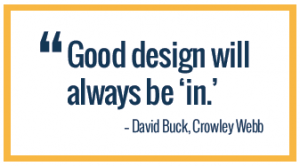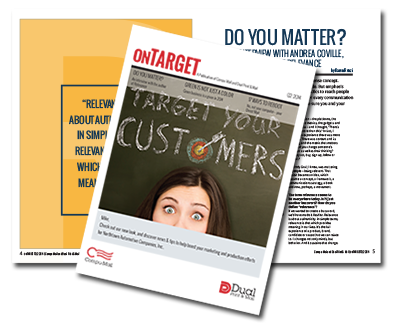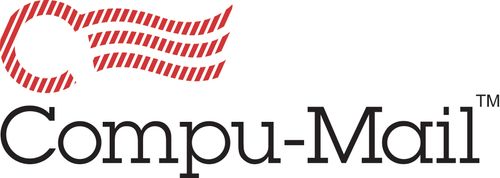Contrary to dire predictions you may hear from time to time, we can confidently say that print is NOT dead. Successful marketers understand that reaching today’s consumers requires a healthy mix of channels – all working together to target them the right way at the right time.

So print design is here to stay, but it’s certainly not staying the same. We picked the brains of a few great creative experts about the ways they see print design evolving as we come into 2015. Now we’re bringing their insight to you.
Engage the Senses
The things that make print inherently different from digital are some of the things that get designers most excited about print. Consider the tactile and visual elements that can’t be replicated on screen: special finishes and other design and printing techniques that lend texture and depth to a piece. Kim Pentheros, Art Director at Gelia refers to this technique as “luxury printing,” something she sees becoming more accessible as print technology evolves. It highlights the sense of touch, engaging consumers in a way only print can.
Touch isn’t the only one of the five senses that can be triggered by a print piece. Jerry Lee, Partner/Chief Creative Strategist at The Quilted Squirrel, suggests that engaging other senses such as smell, and of course sight, can work too, “If paper stock or finish can bring an idea to life – a bad breath scratch-and-sniff feature on a mouthwash flyer, or vibrant, almost neon-white teeth on a toothpaste ad – it adds to your engagement with the reader, and becomes just as important as the messaging.”
Pack a Punch
One area where print remains integral to the customer experience is in packaging. Even if the customer experience begins at the digital level – say placing an order via website after receiving a promotional email – the customer ultimately receives a tangible product which incorporates print.
Lee notes, “With the higher level of self-association placed on brands today, we see the print world placing a higher value on packaging. The expected value and care of a packaged good…brings with it a need to make the packaging as strong as the product it contains. High quality textures and finishes are not only called upon in the outer packaging, but internal sleeves and literature as well.”
The Future is Now
“What once seemed so futuristic – the idea of just making something appear as if out of thin air – is now here. It’s always that way, isn’t it?” This reflection Ben Siegel, Editor of Block Club Magazine, makes regarding 3D printing points to a main reason this technology is one that print designers are keeping an eye on: the cool factor.
While the full scope of applications for 3D printing is still in early stages, it’s gaining momentum – and designers are taking notice. Lee for one sees a strong future for 3D; “3D printing has incredible potential in the way it can bring ideas to life, and do so quickly. Trade shows and experiential marketing will be impacted in a great way by its potential.”
Special and Specialized
Dave Buck, President of Crowley Webb, sums it up best as he describes how print has evolved, “At its best, print has become more special and more specialized. Special because it has to be valuable or you won’t bother doing it – for instance, you can just download the MP3 or you can buy the CD. What makes you buy that CD? The packaging is the difference. You want to have that print in your hands, the design that sets it apart. Things that are conceptual and tactile people value.”
As for “specialized,” Buck explains that it means that the “role of each print (and digital) piece is well thought out. We’re thinking in terms of customer journeys and providing value and interest to move people along the continuum. In other words, we are more strategic up front and aren’t just doing a brochure to do a brochure. We’re always thinking about the customer, adding value and engaging them.”
New Opportunity
Print has come a long way from just being a default communication tool that is more or less required to convey your message to customers. The expanded breadth of channels, primarily digital, means that print has had to grow up. Increasingly, the choice to use print is a thoughtful one – taking into account the big picture of customer communication and how every piece works with each other.
The often reduced use of print actually results in a big positive for savvy communicators. It’s an opportunity for a well-designed and high quality print piece to truly stand out. As Buck puts it, “A high end print piece is really irreplaceable.”
Pentheros echoes that and also references recent scientific work indicating that “[A physical print piece] is remembered more by the human brain than another display on our digital screens. And sometimes, there are just certain aspects of a printed piece that cannot be replicated through the glass of our devices.”
In today’s blended marketing arsenal, it’s clear print still holds a leading role – and, when used well, print provides an opportunity for a brand to truly stand out from the rest. But, as Siegel says, “I don’t know what 2015 will bring. I’ll let you know when we’ve gotten there.” Our advice? Take every opportunity to make 2015 a great year for print, and enjoy the ride.

This article was reproduced from our Q4 issue of OnTarget, a publication full of print and marketing news and ideas.





